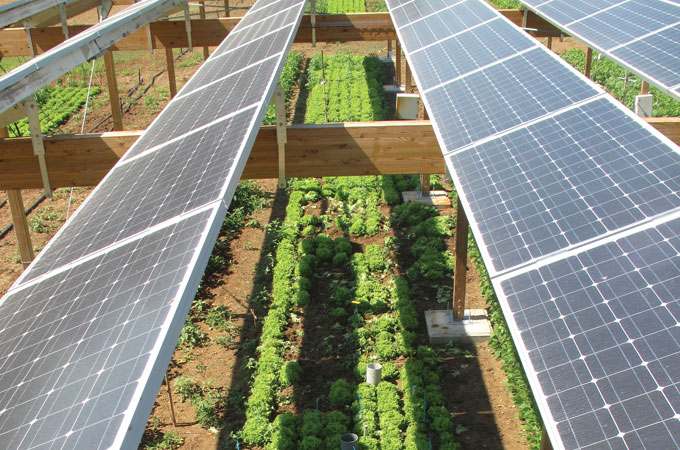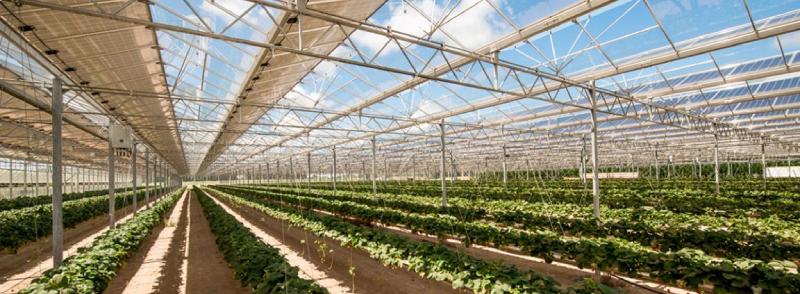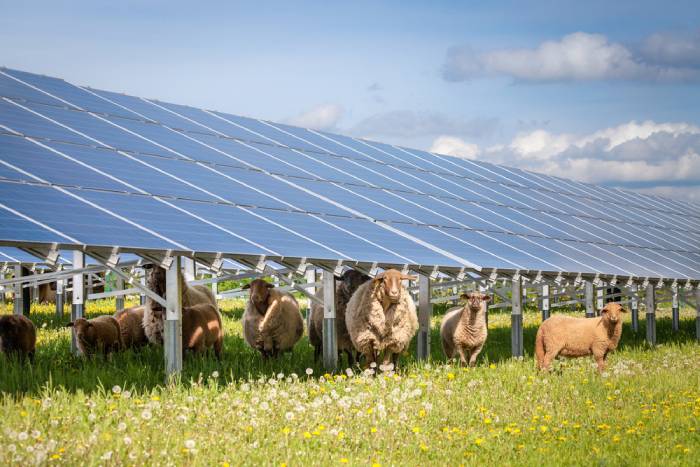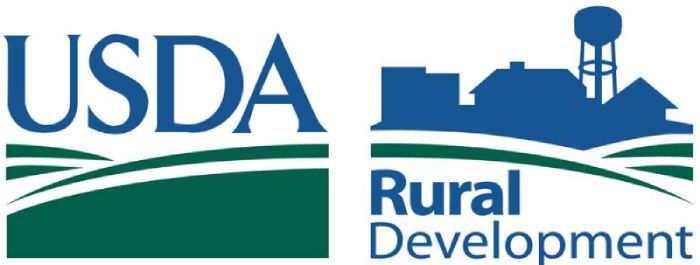Written by Jack Garraty | Published on July 22nd, 2020
Solar Energy and Agriculture Overview:
- The commercial agriculture sector experiences some of the largest operating costs relative to other industries.
- Solar photovoltaic systems offer exceptional advantages for a variety of agricultural businesses.
- Agrivoltaics are unique photovoltaic systems specifically designed for different agricultural needs.
Commercial agricultural businesses have increasingly been turning to solar technologies to improve financial sustainability. There are many unique operating costs associated with agricultural businesses, and solar photovoltaic (PV) systems are becoming more and more beneficial for farmers, agricultural packaging/distribution companies, and other businesses associated with the agricultural sector.

Advantages of Solar PV for the Agriculture Sector
Operating costs are often an overwhelmingly large portion of a business’s yearly expenditures. This is particularly true for agricultural companies. Electricity costs, crop production and maintenance costs, water utilities; these are all serious concerns not only for smaller farming operations but for large-scale agricultural production companies as well. These expenditures can be sharply reduced through the adaptation of solar technology systems that can be easily implemented on most project sites. Reductions in utility costs such as energy and water bills and increases in crop production and management streamlining are all unique benefits to incorporating solar PV systems into a farm’s infrastructure.
Another problem many farmers face is the accessibility of a diverse revenue stream. Solar projects can help diversify these revenue streams through virtual aggregate net metering: the practice of allowing one or more customers to disperse excess energy to surrounding areas where energy is needed, as well as through SREC markets (learn more about SREC markets through our article on these interesting market opportunities)

Source: Met Solar
Some of the most promising developments for utilizing solar PV systems on agricultural sites is the expanding research and implementation of agrivoltaics; the practice of growing crops under partially transparent solar panels. Crops such as potatoes, peppers, tomatoes are exceptional at growing under solar panels, and interestingly, pollinator farms are particularly good candidates for agrivoltaic systems. In an article written by a technology news outlet, Ars Technica, studies provided indicate that for example, “cherry tomatoes saw a 65% increase in CO2 uptake and a 65% increase in water-use efficiency. They produced twice as much fruit while using the same amount of water.”¹ The research findings in the studies cited suggest promising developments in solar technologies that are specifically being engineered for farms. A note to make is that while water usage was not found to decrease, the fact that crop production increased while water usage remains the same provides some interesting insights into how water utilities can remain the same while producing significantly more crop revenue.
Another interesting way for farmers to incorporate solar PV systems into their operations is through more traditional ground-mounted systems. For many farms and agricultural operations, there are portions of land that are not viable for crop production. Utilizing these areas for the purpose of solar farming, can help boost revenue stream diversification and establish a steady source of passive income. There are also opportunities to incorporate this style of photovoltaic design for livestock management farms. Our solar experts have prior experience designing and implementing solar panels that are raised to allow livestock to graze freely under the panel system.

©hykoe – stock.adobe.com
USDA Rural Energy for America Program
While the benefits of agrivoltaic systems are promising and intriguing, the installation capital required can sometimes be intimidating. Thankfully, the Rural Energy for America Program or REAP is a federal program intended to incentivize farmers and other agricultural businesses to incorporate solar panel systems into their agricultural business site. According to the program’s regulations, “[REAP] provides guaranteed loan financing and grant funding to agricultural producers and rural small businesses for renewable energy systems or to make energy efficiency improvements.”² Approved applicants will be granted up to $20,000 for project installation purposes and with the help of Capital Solar Group’s professional solar experts, our free preliminary appraisals can assess your business’s likelihood of obtaining a REAP grant and the viability of your project site.

¹ Johnson, S. K. (2019, September 05). Crops under solar panels can be a win-win. Retrieved July 07, 2020, from https://arstechnica.com/science/2019/09/crops-under-solar-panels-can-be-a-win-win/
² Rural Energy for America Program Renewable Energy. (n.d.). Retrieved July 08, 2020, from https://www.rd.usda.gov/programs-services/rural-energy-america-program-renewable-energy-systems-energy-efficiency


